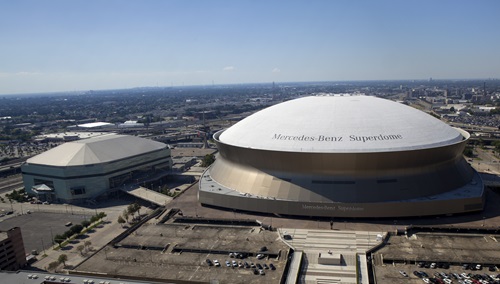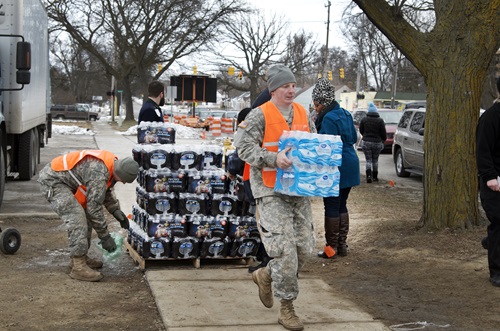
Photo © Julian smith | Dreamstime.com
In the face of an intense hurricane season, stadiums are getting proactive, signing on with FEMA to become emergency shelters. This differs from previous years, where response was more reactive and many facilities did not have food, water and supplies to support the thousands of people who poured in after storms.
FEMA Administrator Deanne Criswell told Washington Post reporters the program is intended to better prepare local officials so that they are not scrambling to respond to disasters as they unfold.
“The biggest difference between this and Hurricane Katrina is we’re doing this in advance,” she said. “We will know what the capabilities of each specific stadium are, and we will work with them on the threats in the cities that they’re in.”
In the case of Hurricane Katrina, officials in Louisiana were caught flat-footed by the magnitude of the storm and the devastation it wreaked, unhousing thousands of people and putting pressure on the Superdome’s limited capacity to provide basic amenities.

FEMA and the NFL are hoping to avoid these scenarios by having stadium officials understand what is involved (and what is needed) in an emergency, and to agree to provide it.
And so far, it’s working: So far, says the Post, four venues have signed on; they include MetLife Stadium west of New York City, home of the Jets and the Giants; Acrisure Stadium in Pittsburgh, home of the Steelers; Lumen Field in Seattle, home of the Seahawks; and Raymond James Stadium in Tampa, which hosts the Buccaneers.
SoFi Stadium in Los Angeles, where the Rams and Chargers play, is expected to join in the coming weeks.
The idea came about during the COVID pandemic when many stadiums served as testing sites and temporary hospitals, and when many ice rinks, unfortunately, were commandeered as makeshift morgues. Officials thought that once the pandemic had come under control, it would be possible to create a plan that could be implemented when and if necessary.
Now, with COVID in the rear-view, thanks to vaccines, officials have time to plan and prepare and they are hoping to make things easier than to simply pressing stadiums into service.
FEMA Administrator Deanne Criswell said in an interview that she hoped baseball stadiums would be interested in partnering with FEMA to the extent they are able. But of course, the question becomes: Could youth sports venues help? And the answer is simple: Yes, they can – and have.
In 2016, Rocky Top Sports World served as a shelter for individuals displaced by fires that tore through Eastern Tennessee. Many individuals across the area who were forced out of their homes by the fires took advantage of the temporary shelter offered by Rocky Top Sports World. And that, said Lori Moore, who was the manager of the facility at the time, was a story in itself.
Rocky Top received a call from a local K through 8 school asking if they could use the facility to house children who had to be evacuated because of the fires. The facility mobilized immediately.
“We organized our team which that day, was just very small – we didn’t have a lot of people on duty – and we set up an area for check-in and check-out. The school was great – they were just as organized and orderly as anyone could imagine.”
It wasn’t long before Moore and her team realized there was much work to be done. More people were going to need a safe place to stay, and Rocky Top had the space. Word spread immediately.
“Suddenly, we had people pouring in the doors,” said Moore. “This place filled up quickly. It was nuts…. We had 1,200 people that first night and after that, it was about 400 to 500 people, then for a while, we had about 200 people consistently.”
The sports facility also became a triage center for cases of individuals suffering from burns, smoke inhalation and more.

“We had really serious injuries coming in,” noted Moore. Rocky Top’s sports trainers were available to help, as was an E.R. doctor who had been evacuated from a local residence, and who worked for 48 hours straight
To be clear: Using a facility as an emergency shelter takes a tremendous toll on both the staff and the facility. But if a facility has necessities, such as restrooms, showers and space to keep people safe, as well as places to store and serve food and water, it can be an excellent option
In 2023, the Sports Facilities Companies website published information on “The Role of Sports Facilities During an Emergency.” Noted were different roles facilities could fill, including distribution centers and emergency shelters.
It would not be the first time sports and multi-purpose facilities have been called upon to do double duty; schools and community centers have long hosted motorists stranded by unexpected storms, and individuals who needed housing because evacuations had left them no choice.
Now, however, with time to plan – and a good way to do so, it is hoped that more facilities will step up in advance so that if and when the worst happens, there are ways to contribute to making things just a little bit better.

